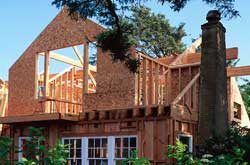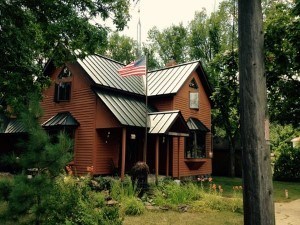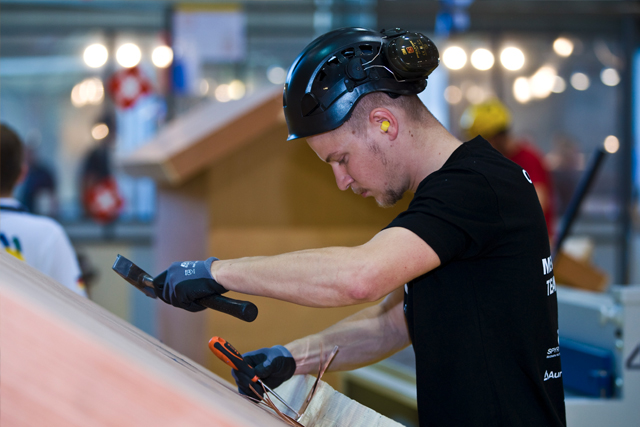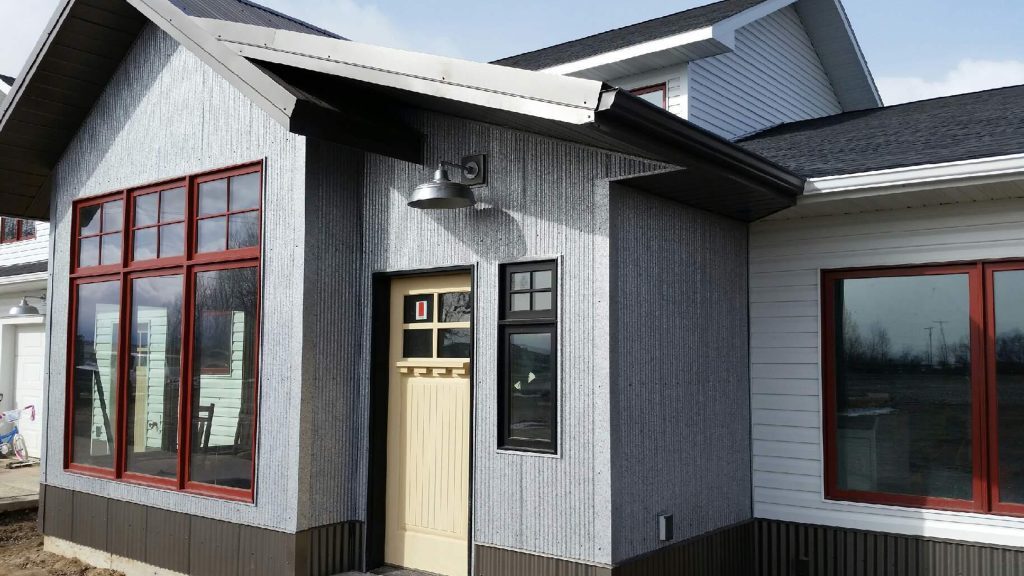METAL ROOFING: WHAT YOU NEED TO KNOW
There are lots of things to think about when considering roofing for your home. It includes cost, style, materials, and installation. Additionally, you want your home’s roof to be durable, good-looking, fire-resistant, and weathertight as much as possible.
With that said, take metal roofing into consideration instead of the conventional materials. A lower environmental impact, energy efficiency, and longevity are only some of the marvelous benefits of a metal roof.
Resistant To Insect, Rot, Fire Damage, and Snow Build-up
One of the significant reasons why metal roofing increased in popularity these days is that it’s practically fireproof. Metal roofing has instantly become the material of choice by homeowners, especially with the risk of wildfire on the rise.
Becoming More Common
Before, metal roofing was only found on architect-designed houses. Well, that is no longer true today. Metal roofing is progressively found in traditional homes due to the improved manufacturing processes and increasing availability.
Doesn’t Attract Lightning
Many people think that metal roofing will attract lightning. However, this belief isn’t borne out by statistics or facts. Metal Construction Association’s technical bulletin asserted that metal roofing doesn’t raise the danger of a lightning strike at all.

Going Green with Metal Roofing
Roofing ranks near the top of the list when it comes to commonplace home improvements that can benefit big from going green. After all, your roof’s exposure to heat, cold, and sunlight make it an excellent candidate for improving your home’s overall energy efficiency. And since your roof is also your home’s most important line of defense when it comes to protecting you and yours from the elements, it’s easy to see why homeowners across the country are drawn to the quality workmanship and high expectations that green remodeling is known for.
Green Metal Roofing
If you go into it with a green mindset, metal roofing is clearly one of the greenest roofing products on the market. Why? You can purchase metal roofs made from recycled materials; a metal roof is recyclable again when you tear it off; and on top of that, metal roofs are long lasting, durable, and energy-efficient, as well. They don’t come without a few potential pitfalls, however, which is why we’ve put together this guide on green metal roofing to help you make your new metal roof installation as green as possible.
Energy Efficiency and Green Metal Roofing
Choosing a greener metal roof almost always translates into cheaper energy bills down the road. Here’s what you can expect from your new metal roof in the energy savings department, and a few things you can do to increase your energy savings even more.
Metal Roofing is Cool Roofing—Metal roofing is known as a “cool” roofing material because it transmits far less heat from the sun down into your attic than other materials such as asphalt shingle roofing. Mostly that’s because metal roofs are thinner and can’t retain as much heat, though the color you choose to paint your roof can also make a difference.
Install Light Colored Roofing—With metal, a galvanized finish or white painted roof is ideal. Light colored roofing reflects, rather than absorbs, heat from the sun. The result is a cooler home and reduced cooling bills, especially if you have air conditioning ductwork in the attic.
Install Radiant Heat Barriers—Radiant heat barriers are a thin layer of metal insulation (usually tin foil with a paper backing or a metalized mylar sheeting), which can reduce radiant heat transfer into your attic by as much as 95 percent when installed to the underside of your roof.
Install Rainwater Catch Systems—Because metal roofs channel water so efficiently, and they don’t have toxic components like asphalt shingles, they are the perfect roofing material for a rainwater catch system. By installing cisterns or drums to catch valuable rainwater and runoff for landscaping use, you can save money on the monthly water bill.
Health Considerations and Green Metal Roofing
Johnston is quick to point out that contrary to popular belief, green remodeling isn’t all about improving energy efficiency. It’s just as much about creating more comfortable, safer, and healthier homes. Here are a few simple steps you can take to ensure that health is a priority during and after the time that your new roof is installed.

THINGS YOU MIGHT NOT KNOW ABOUT METAL ROOFING
Metal roofing is rapidly growing in popularity among homeowners, most likely due its durability, low-maintenance, and low cost. It’s perfect for any home or commercial building, and our metal roofing contractors can make sure it’s properly designed and installed.
Still, asphalt shingles remain the most popular choice of roofing material across the nation. Asphalt shingles are a fine material for roofing, and ultimately the choice is up to you.
Metal roofing is completely recyclable.
New metal roofs will often be comprised of 30-60% recycled metals. They can be recycled infinitely, too, without ever losing any of their quality. And they’ll never end up in a landfill, so they do a lot to help the environment.
Most metal roofs require little or no maintenance.
Copper, stainless steel, and zinc roofs will only need repairs if there’s a problem with the design or installation. And they can last on your Wautoma home for well over fifty years.
Metal roofing should be considered a lifetime purchase.
While you may spend more upfront than you would for other materials, you’ll never have to repair or replace it again. And you can wash it easily with good-old-fashioned water

Metal Roofing
Metal roofers produce sheet metal parts for roofs and façades of buildings and assemble them. These include drainpipes, windowsills, as well as balcony, façade and roof claddings. Following the specifications of architects and building contractors, they produce construction units of sheet metal e.g. by bending, seaming, cutting and soldering and turn prefabricated sheet metal parts into the appropriate shape. They also produce sheet metal cladding for insulated pipes and containers and install ventilation and air-conditioning systems, solar panels, snow guard and bird control systems, as well as lightning protection systems.
Metal roofers mainly work in workshops and in outdoor construction sites (such as on roofs and façades) of buildings which are used for domestic, communal or commercial purposes. Metal roofers coordinate the tasks to be completed with architects and building contractors. They have the planned cladding of e.g. façades, balconies, roofs and chimneys explained to them on basis of plans and drawings. They make their own suggestions and draw attention to things such as the latest trends in roof design or the benefits and disadvantages of different materials
When the details of the structure have been determined, metal roofers produce the required construction units in their workshop. They cut and punch sheet metals, shape them by bending, creasing and compressing them, join them by compressing and welding them, thereby bringing the parts into the desired shape. Where they need several copies of certain workpieces, metal roofers produce stencils that enable them to produce identical forms. They examine the finished construction units and treat the surfaces, e.g. by applying anti-corrosion agents. They buy many prefabricated parts such as gutters and pipes from shops so these only need adapting, e.g. by sawing pipes and gutters to the desired length.
Many preparatory activities need to be carried out before metal roofers are able to assemble the parts they have prepared in the workshop on or in the building. After transporting the finished parts to the construction site, work and safety scaffolding needs to be set up, personal fall protection systems installed on buildings and wire ropes and winches set up. In addition, depending on the order, various activities on the brickwork are required such as creating wall slots and openings. Before metal roofers can fit façade or roof cladding, they affix thermal insulation materials. Where sheet metal parts are connected with the brickwork, metal roofers glue or weld joints and junctions, seal pipe connections, and close openings and recesses in the brickwork. They clad pipes using plastic sheathing, for example.
Metal roofers not only make new installations but also repair roof and façade cladding that has become damaged in the course of time and, in this process, fit additional thermal insulation where necessary. In addition, they install ventilation and air-conditioning systems, solar panels, heat exchangers and water pipe systems. The range of tasks also includes the installation of lightning protection systems and roof accessories such as snow guard systems. Metal roofers frequently work manually, using different machinery and hand tools which make their work easier, such as computer-controlled punching and bending machines, grinding machines plus saws and pipe expanders.

Metal Roofing Colors: Selecting the Best Color
Metal roofing offers a great variety of styles, materials, and colors. This guide focuses on color selection. — The item that every home owner can easily relate to.
Styles relate to the shape of the metal when installed on a roof, such as standing seam, or corrugated panels. Practically speaking, color considerations don’t matter to the style, though some styles will present slightly different colors and paint finishes.
Materials correlate with the type of metal, also called “substrate.” The popular choices for homes today are steel, aluminum, and copper. For the most part, we stick to steel and aluminum as the likely choice for most readers.
attention is on color. We’ll cover available options, general information on color, smart factors for selecting color and wrap up with some technical information dealing with the manufacturing of paint for metal roofs as it matters to the consumer (you).
Surprisingly, many people think of metal roofs as having limited color options. Perhaps they think the color matches the type of metal. Silver for steel, tin and aluminum; reddish-brown for copper; dark gray for lead. As if those are the extent of the color options.